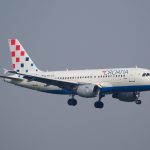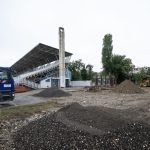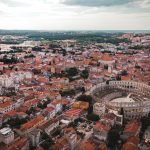ZAGREB, November 2, 2019 – The Bosnian Serb entity’s vice-president Josip Jerković, who represents local Croats, said on Friday he had received assurances from the Serb leader Milorad Dodik that the planned route of the future motorway through the area of Modriča would be changed to avoid demolition of Croat houses in three villages.
Jerković told Hina that alterations would be made to the route, which is now planned to pass through the three Croat villages: Garevac, Čardak and Donji Kladari.
The plan to demolish some of the houses of Croat returnees for the purpose of the construction of the future motorway has caused great concern among local villagers and has promoted their representatives as well as Croatia’s office-holders to react.
Thus, Prime Minister Andrej Plenković said on Thursday that Croatian authorities would investigate the possibility of changing the route of that motorway to run from Banja Luka to Belgrade whose construction would require the demolition of houses of Croat returnees in the municipality of Modriča in the Bosnian Serb entity of Republika Srpska. The PM said that he would check with the relevant authorities if it was possible to change the set motorway route.
Jerković said today that Dodik informed him about his talks with PM Plenković on Thursday and that Zagreb had requested the change of the route.
During the 1992-95 war in Bosnia and Herzegovina, almost all houses in the Croat-populated villages of Garevac, Čardak and Donji Kladari which had a population of about 8,000, were destroyed and their residents were expelled. when the area was occupied by Bosnian Serb forces.
The process of return was obstructed for years but the most persistent ones managed to rebuild their homes and the community in Garevac today numbers around 150 people.
According to the existing plans, a section of the future Banja Luka – Belgrade motorway is to run through the part of Garevac where there are around 100 houses, of which 80 were rebuilt after the war. This would literally partition the village, with houses that would remain intact staying on one side of the motorway and farmland staying on the other side.
The motorway, to run to the border with Serbia, should connect to the Banja Luka-Doboj section, which has already been built.
The future motorway is not designed the way such roads are usually designed – as the shortest straight line – but at Doboj it turns at the right angle towards the north, in the direction of Garevac, which is only 20 kilometres away from the border with Croatia, and then turns back southwards, towards Bijeljina.
The reason for such a design was evidently to avoid crossing the entity line and build the road exclusively in the territory of the Serb entity, whose borders were defined by the Dayton peace agreement, which did not follow any geographical, transport, business or historical logic.
Expressing support for Croat returnees in the Bosnian Serb entity, Plenković said at the government meeting on Thursday morning that Transport Minister Oleg Butković had recently discussed the matter with the Serb member of the Bosnia and Herzegovina Presidency, Dodik, and that additional political and diplomatic contacts had been established to avoid having to destroy houses in the three Croat villages.
Jerković today said that the change of the route would be enabled thanks to persistent diplomatic activities of Croatia after local Croat representatives warned of the problem.
More news about Croats in Bosnia and Herzegovina can be found in the Diaspora section.








